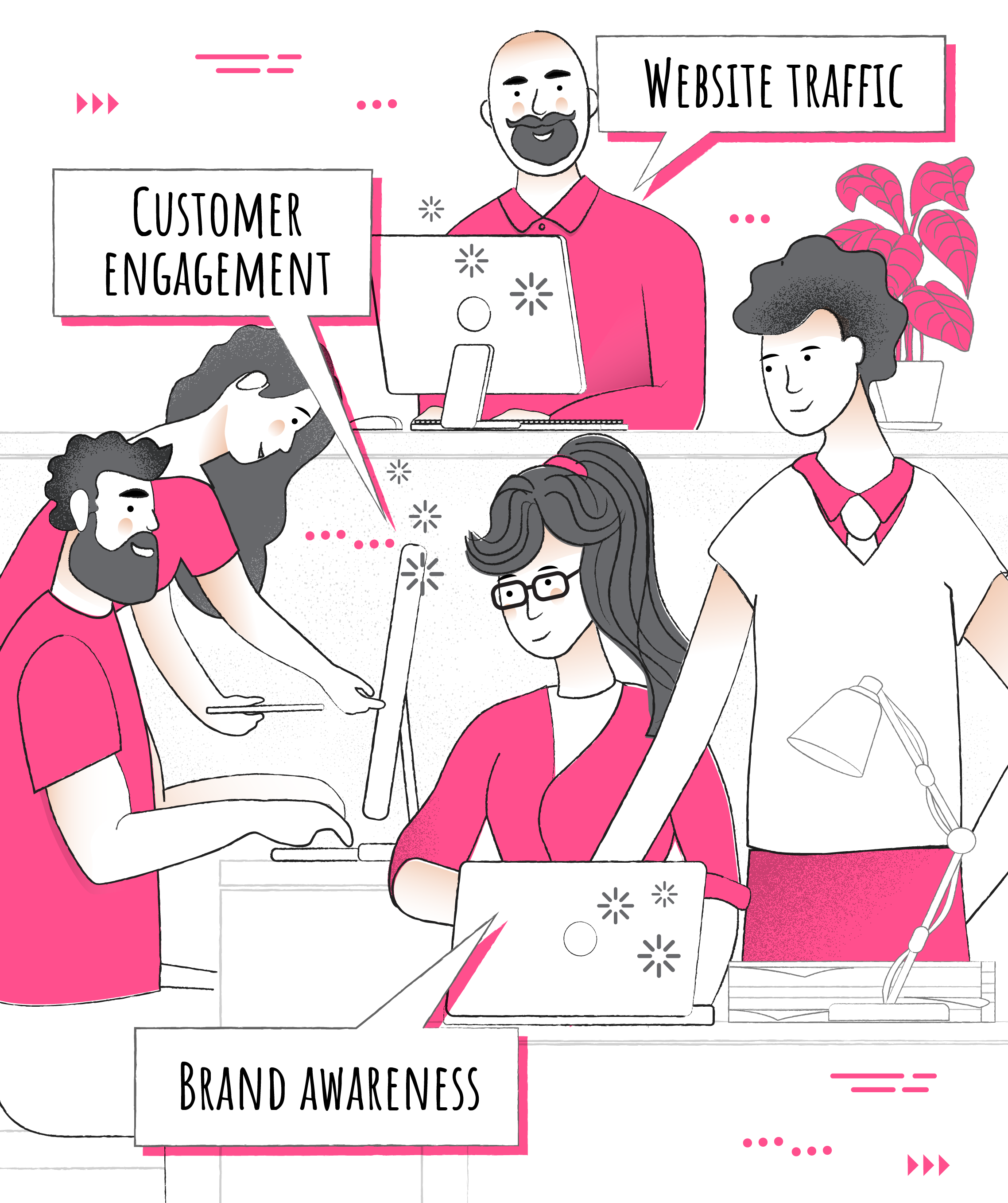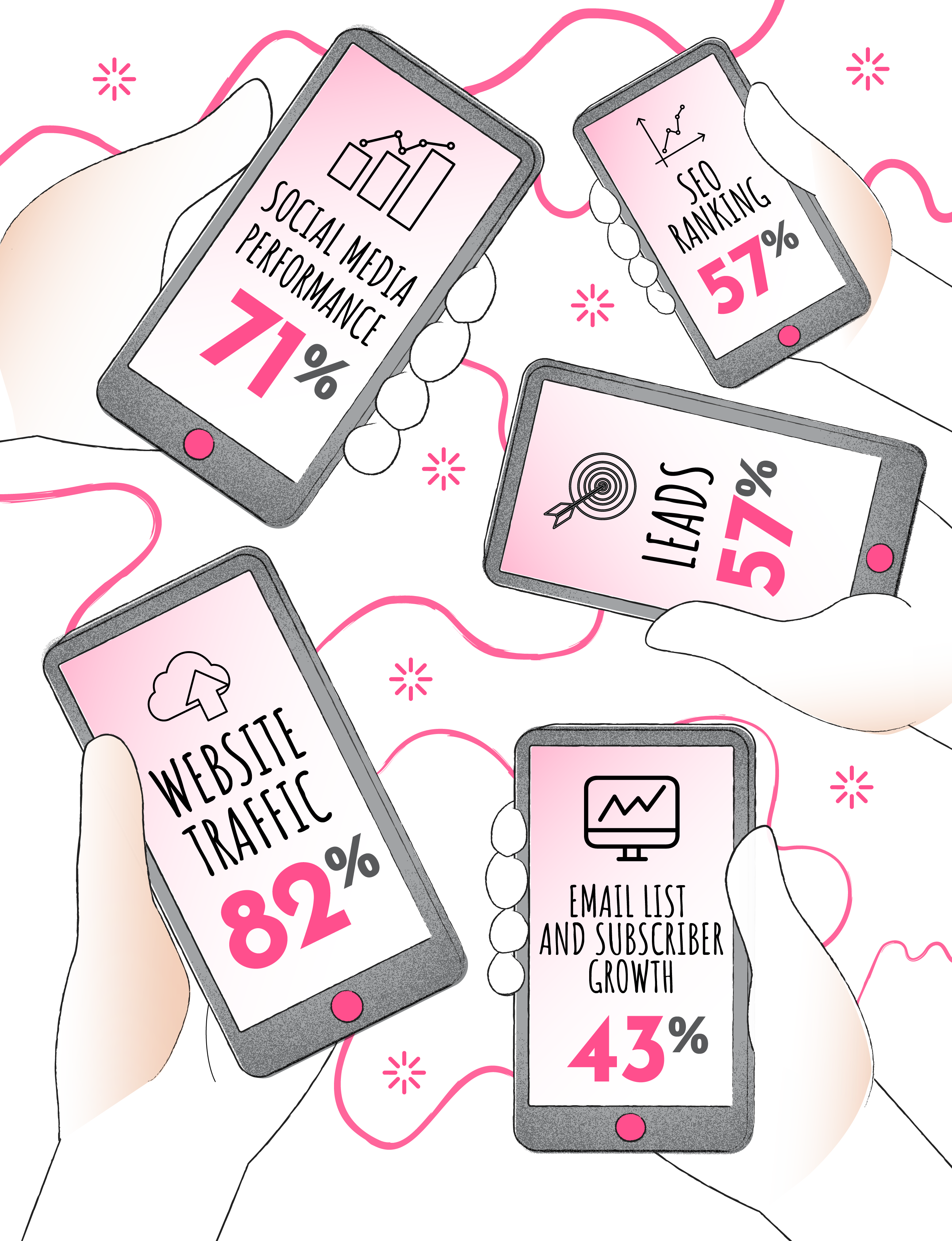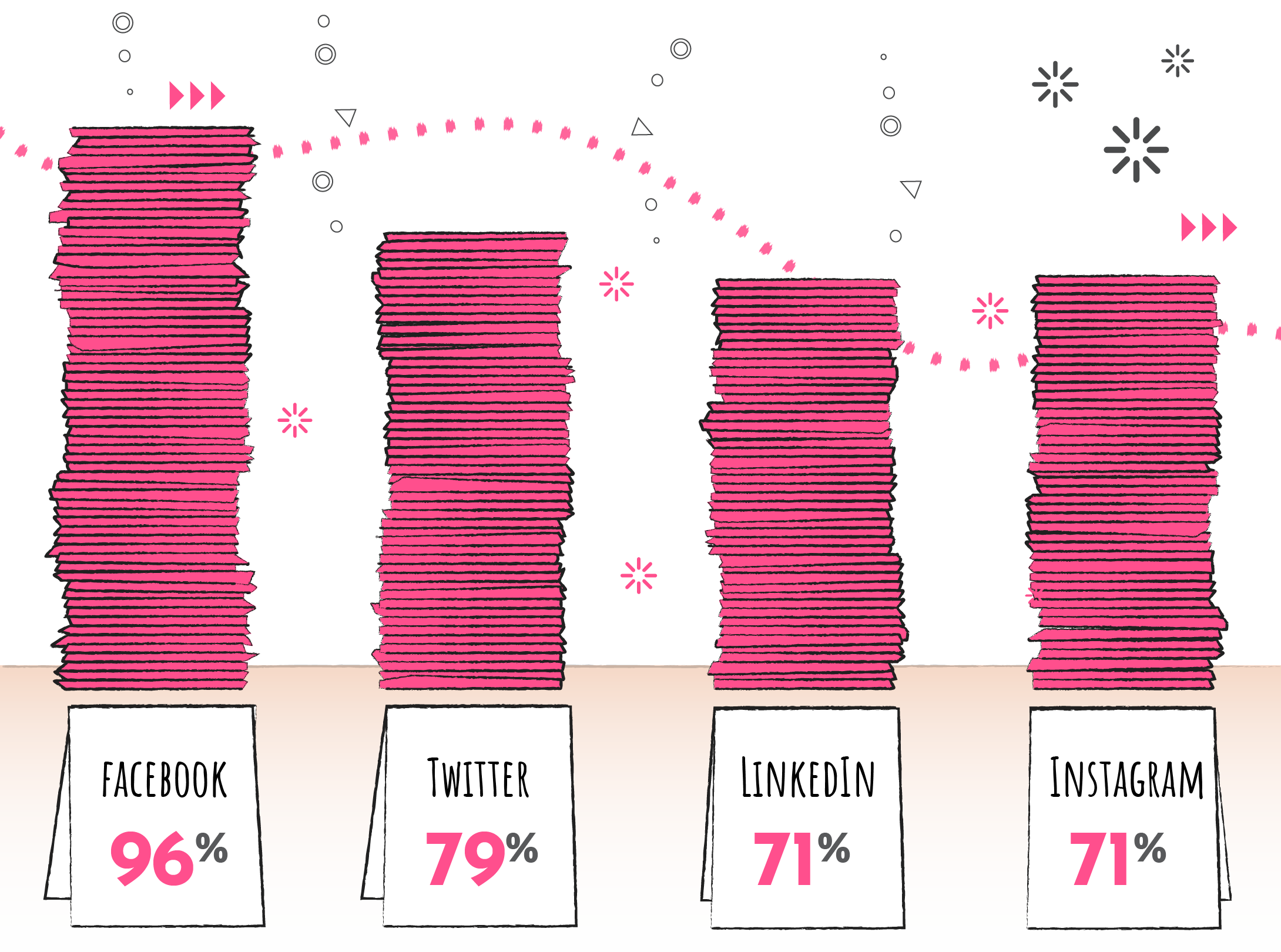
SIZE OF ENTERPRISE COMPANIES
CONTENT MARKETING MATURITY

MOST POPULAR CONTENT MARKETING TACTICS
EMAIL
79
%
BLOGS
68
%
LANDING
PAGES 64 %
PAGES 64 %
VIDEOS
AND VLOGS 54 %
AND VLOGS 54 %
INFOGRAPHICS
50
%
CASE STUDIES
36
%
EBOOKS AND
WHITEPAPERS 25 %
WHITEPAPERS 25 %
AMOUNT OF BUDGET SPENT ON
CONTENT MARKETING

WHAT'S IN A DOCUMENTED ENTERPRISE CONTENT MARKETING STRATEGY?
KPIS ALIGNED TO
THE BUSINESS GOAL 75 %
THE BUSINESS GOAL 75 %
TONE
OF VOICE 67 %
OF VOICE 67 %
CONTENT
CALENDAR 67 %
CALENDAR 67 %
FOCUS
PERSONAS 58 %
PERSONAS 58 %
COMPETITOR
ANALYSIS 58 %
ANALYSIS 58 %
ANALYTICS
AND SEO 58 %
AND SEO 58 %
CUSTOMER
JOURNEY MAP 50 %
JOURNEY MAP 50 %

TOP PROBLEMS ENTERPRISE CONTENT MARKETERS FACE
LACK OF
TIME 57 %
TIME 57 %
PRODUCING ENGAGING
CONTENT 36 %
CONTENT 36 %
LACK OF BUDGET
32
%
LACK OF BUY-IN
32
%
LACK OF INTEGRATION
ACROSS MARKETING 21 %
ACROSS MARKETING 21 %


MOST COMMONLY OUTSOURCED ENTERPRISE MARKETING SKILLS
VIDEO
AND PHOTOGRAPHY 79 %
AND PHOTOGRAPHY 79 %
DESIGN
46
%
WRITING
38
%
SEO
38
%
CONTENT DISTRIBUTION
AND PROMOTION 33 %
AND PROMOTION 33 %
